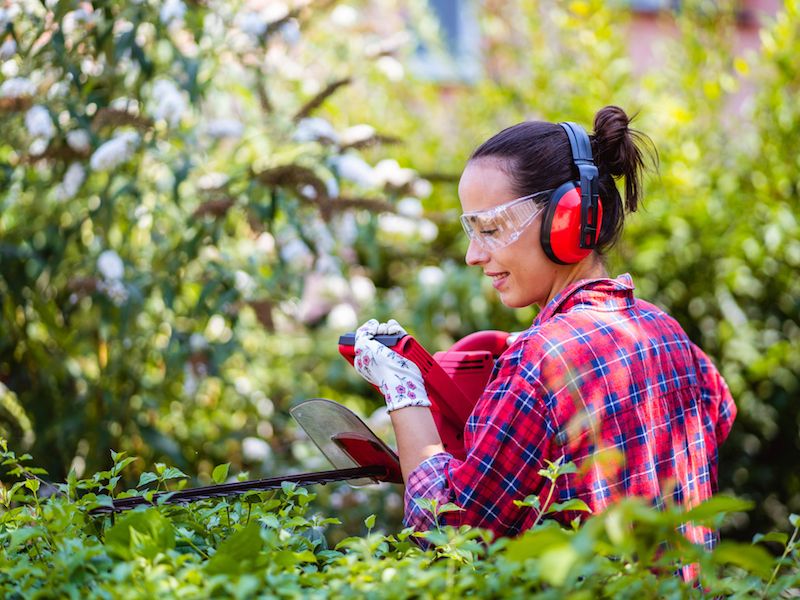
Eating right and protecting your hearing have some parallels. It sounds good, but not many of us have a very good concept of where to begin. This is especially true if you don’t consider your daily environment to be especially noisy and there aren’t any obvious dangers to your ears. But your ears and senses can be stressed by everyday living, so practicing these hearing protection techniques can help preserve your auditory acuity.
If you want to continue to enjoy the sounds around you, you should do everything you can to slow down the degeneration of your hearing.
Tip 1: Hearing Protection You Can Wear
The most simple and practical way that you can safeguard your hearing is to protect your ears. This means taking basic actions to reduce the amount of loud and harmful noises you’re subjected to.
This means that when it’s called for most people will want to use ear protection. Hearing protection generally comes in two basic forms:
- Ear Plugs, which are put in the ear canal.
- Ear Muffs, which are put over the ears.
Neither form of hearing protection is inherently better than the other. Each type has its positive aspects. What’s essential is that you find some hearing protection that you feel comfortable with.
Tip 2: When Sound Becomes Harmful, be Aware of It
But how can you tell when to use hearing protection? Noise that is painful is normally regarded as harmful. But in reality, noise can begin to damage your ears at a much lower level than you might expect. The sounds of traffic, as an example, are loud enough to start damaging your hearing after only a couple of hours. An important step in protecting your hearing, then, is knowing when sound becomes harmful.
The following threshold is when sound becomes dangerous:
- Over 100 dB: Your hearing can be very rapidly damaged by this. Anything above this threshold can damage your hearing in minutes or seconds. For example, rock concerts and jet engines will damage your hearing in 30 seconds.
- 85 decibels (dB): After about two hours this level of sound is damaging.This is the volume of sound you’d expect from a busy city street or your hairdryer.
- 95-100 dB: This is the typical volume of your earbuds or the level of farm equipment. This level of sound becomes harmful after 15-20 minutes.
Tip 3: Turn Your Phone Into a Sound Meter
Now that we have a basic concept of what volume of noise may be hazardous, we can take some precautions to make sure we minimize our exposure. But in day to day life, it can be tricky trying to measure what is too loud and what isn’t.
Your smartphone can now be used as a handy little tool. There are dozens of apps for iPhone, Android, and everything in between that turn your device’s microphone into a sound meter.
Having a dynamic sound meter with you will help you measure everything you’re hearing in decibels, so you’ll have a much better idea of what dangerous levels really sound like in your daily life.
Tip 4: Keep an Eye on Your Volume Buttons
A smartphone with earbuds is normally the way people listen to music nowadays. Your hearing is put at risk with this combination. Over time, earbuds set to a sufficiently high volume can cause significant injury to your hearing.
That’s why protecting your hearing means keeping a focused eye on your volume management. In order to drown out noises elsewhere, you should never increase the sound level. And we recommend using apps or configurations to ensure that your volume doesn’t accidentally become dangerously high.
If your hearing begins to wane, earbuds can become something of a negative feedback loop; in order to compensate for your faltering hearing, you could find yourself constantly increasing the volume of your earbuds, doing more damage to your ears in the process.
Tip 5: Have Your Hearing Examined
You may think that having a hearing exam is something you do only when your hearing begins to diminish. Without a baseline to compare results to, it’s not always easy to detect a problem in your hearing.
Generating data that can be used for both diagnostic applications and for treatment can best be achieved by scheduling a hearing test and screening. This will give you some extra context for future hearing decisions and ear protection.
Pay Attention to Your Hearing
It would be ideal if you could continuously protect your ears without any issues. But challenges are always going to be there. So whenever you can and as often as possible, protect your ears. You should also have your ears tested routinely. Hopefully, these guidelines will help you get a good start.
